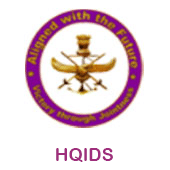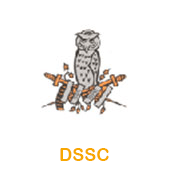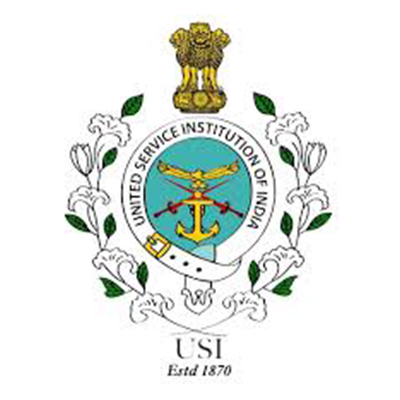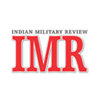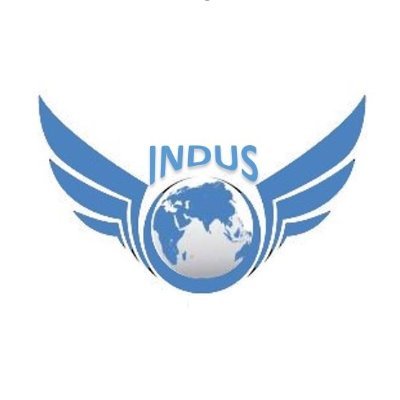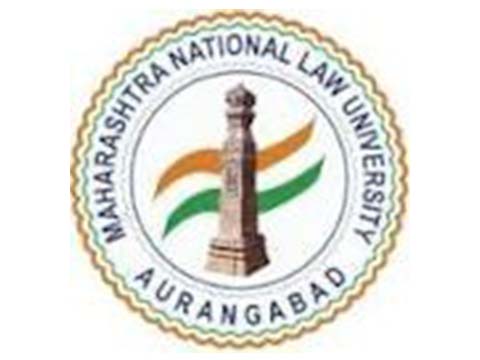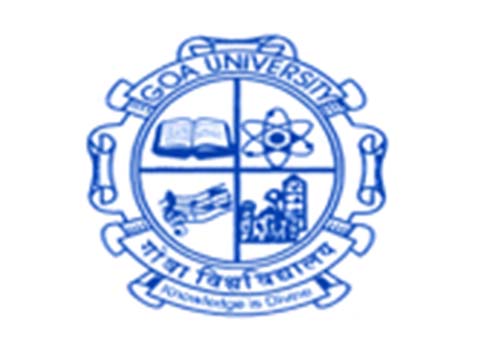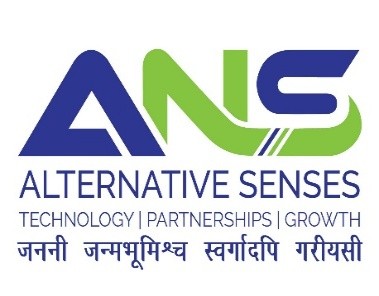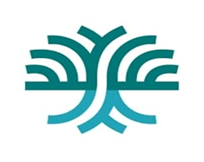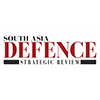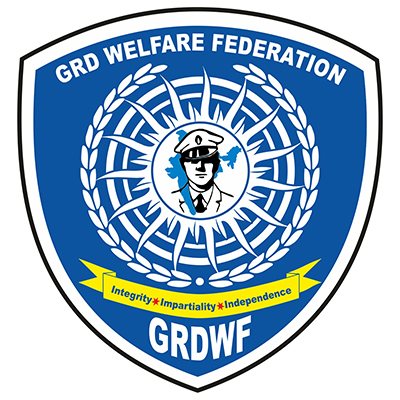ENVIRONMENT SCAN: 16-30 Sep 2021
INDEX
(e-Scan 16-30 Sep 2021)
|
S No |
Rank & Name |
Country |
Page(s)
|
|
1. |
Brig RK Bhutani (Retd)
|
CHINA (Geo-Strat, Geo-Politics & Geo-Economics) |
2-5 |
|
|
Col Siddhartha Sharma
|
WEST ASIA |
5-6 |
|
|
Gp Capt GD Sharma, VSM (Retd) |
UNITED STATES |
6-7 |
|
|
Col Siddhartha Sharma
|
IRAN & AFGHANISTAN |
7-8 |
|
|
Air Cmde T Chand (Retd)
|
NUCLEAR |
8-10 |
|
|
Gp Capt GD Sharma, VSM (Retd)
|
NUCLEAR |
10 |
ENVIRONMENT SCAN: 16-31 AUG 2021
CHINA (Geo-Strat, Geo-Politics &
& Geo-Economics)
Brig RK Bhutani (Retd)
Downgrading of China’s Economic Growth as Challenges Mount in Third Quarter.
Some of the big problems China is facing right now are:-
China Infrastructure Drive Traps Poor Nations with $385 Billion ‘Hidden Debt’:
Study. Research from international development research lab AidData revealed that opaque deals with state banks and companies under President Xi Jinping’s flagship
investment drive – the Belt and Road Initiative – has left dozens of lower income governments strapped with debt that isn’t on their balance sheets.
China has invested more than $843 billion to build roads, bridges, ports and hospitals in some 163 nations since the programme was announced in 2013. Nearly 70 percent of this money has been lent to state banks or joint ventures between Chinese businesses and local partners in countries that were already deeply indebted to Beijing..
Many poor governments were not in a position to take on any more loans, hence China got creative. Loans were given to a “constellation of actors other than central governments” but often backed by a government guarantee to pay up if the other party could not. The contracts are murky, and governments themselves do not know the exact monetary value they owe to China.
The study found that these under-reported debts are worth about $385 billion. AidData, which is based at the College of William and Mary in Virginia, listed 45 lower and middle income countries which now have levels of debt exposure to China higher than 10 percent of their national gross domestic product.
Resentment has been fuelled about high levels of Chinese money flowing into places such as Balochistan in southwest Pakistan,where locals say they get little
benefit and militants have launched a string of attacks aimed at undermining Chinese investment.
Impact on China’s Economy.
(a) Comments.China has been investing in the infrastructure of more than 160 countries. Many of these, some of them in Africa, have weak finances and risk slipping into a debt
trap. This is exactly Beijing’s plan, for the leverage it could then gain over their policies. These nations would hardly be able to resist its geostrategic demands. Beijing’s loans demanded higher interest rates with shorter repayment periods. Many foreign leaders who were initially eager to jump on the BRI bandwagon are now suspending or
cancelling Chinese infrastructure projects because of debt sustainability concerns. The Blue Dot Network formed by the US, Japan and Australia was intended to counter
China’s BRI. With these three nations, also being members of the QUAD, India should be proactive in this aspect and provide its skilled manpower and managerial and
technical expertise in development of infrastructure.
China Vaccine Diplomacy Wavers as Nations Seek Western Shots.In the early days of the Covid-19 vaccine rollout, China launched inoculation programs across Asia, Latin America and the Middle East, while richer countries hoarded scarce mRNA shots from Pfizer Inc. and Moderna Inc. But many countries that once relied on vaccines from Chinese firms – Sinovac and Sinopharm are now turning to options from the U.S. and
Europe, as concerns mount about Chinese vaccines ’efficacy against the delta strain and the Western stranglehold on mRNA supplies grows looser. That preference may already
be showing up inChina’s customs data, where exports of human vaccines dropped 21% in August to $1.96 billion from $2.48 billion in July, after rising steadily since
Dec. 2020.When the COVID vaccines became available, nations or rather people took whatever was readily available to save lives but with the passage of time, general
populations have become more educated about the differences and they have realized that not all vaccines are equal in terms of protection.
(c) Slowing Momentum.China’s vaccine exports dipped after sending out doses worth billions. This shift played out during Thailand’s deadly outbreak earlier this year. As cases surged and Southeast Asia emerged as the new epicenter of the pandemic, the nation desperately tried to purchase vaccines. Only one supplier came through in time: China’s Sinovac. The shots allowed the country of 70 million to begin its inoculation campaign earlier than hoped, but Thailand soon confronted a challenge now faced by nations across the developing world.
The efficacy of China’s inactivated vaccines ranged from about 50% to 80% in clinical trials. But they are less potent than mRNA vaccines and questions are mounting about their effectiveness against the highly transmissible delta variant. As a result, the Thai government became the first in the world to offer an AstraZeneca Plc shot to people who had already received a jab or even two of Sinovac. While it is not an mRNA, Thai studies showed the Cambridge, U.K.-based Company’s viral vector vaccine is potent as a booster to the Chinese shot, and that Pfizer’s dose was found to be even more effective. Many Thais soon expressed a strong preference for Western shots — even protesting to demand them — and the country’s oppositionbegan lambasting the government for its reliance on China. Thailand halted orders of Sinovac and began buying more Western vaccines. Many governments that once relied on Chinese shots are now
ordering or seeking donations of mRNA vaccines instead. The swing away from China is likely to accelerate as U.S. President Joe Biden promised to donate 1.1 billion mRNA
shots, Europe pledges hundreds of millions of vaccines and India prepares to once again export AstraZeneca vaccines after curtailing shipments following its deadly
second wave. In addition to availability and efficacy, freedom of movement may also be motivating the shift: Recipients of Chinese vaccines can’t travel to some locations, such as Singapore.
Vaccine Exports.As things stand, the list of nations shifting away from Chinese vaccines — or augmenting them with Western boosters — includes Singapore, Turkey (Agreed to buy 100mn Sinovac vaccines, then ordered 120mn Pfizer doses. Now giving Western shots to some recipients of two Chinese shot) and the United Arab Emirates. In China’s own territory of Hong Kong, which has long offered residents a choice between BioNTech and Sinovac, health officials are now testing whether the Chinese shot will perform better when paired with a western booster.
Even in Pakistan, an all-weather ally of Beijing that’s used Chinese shots for 84% of its vaccination drive, some are going out of their way to find Western jabs. Even Brazil has halted talks over 30mn Sinovac shots and backed Pfizer as a booster, according to a Wall Street Journal report.
Comments.Moves like Thailand’s represent a blow to China’s vaccine diplomacy ambitions. Nevertheless, governments face a tricky balance between wanting to protect the public and maintaining good relations with China. Yet China’s pharmaceutical firms — which were initially less forthcoming than western companies in releasing clinical trial data — have not released similarly conclusive studies that inactivated vaccines are effective against delta variant.The Indian government has done well by promoting and investing in R&D of all types of COVID vaccines. In fact, the government gave approval to ZyCoV-D which is the first DNA vaccine for people to receive approval anywhere in the world.x
China’s Power Crunch: Likely Reasons. China is in the grip of a power crunch as a shortage of coal supplies, toughening emissions standards and strong demand from manufacturers and industry have pushed coal prices to record highs and triggered widespread curbs on usage.
How Long has there been a Power Supply Problem in China? Restrictions on power use in homes have only just taken effect. However, China’s massive industrial base has been wrestling with sporadic jumps in power prices and usage curbs since at least March, when provincial authorities in Inner Mongolia ordered some heavy industry including an aluminium smelter to curb use so that the province could meet its energy use target for the first quarter.
In May, manufacturers in the southern province of Guangdong, a major exporting powerhouse, encountered similar requests to curb consumption as a combination of hot weather and lower than usual hydropower generation strained the grid.
Valuing of China Assets No Easy Task After $1 Trillion Wipeout. China’s months-long regulatory crackdown China’s Energy Use Targets. China’s President Xi Jinping announced in late 2020 at a United Nations summit on climate change that the country would cut its carbon dioxide emissions per unit of gross domestic product, or carbon intensity, by more than 65% from 2005 levels by 2030. Has Energy use Declined Since Xi Announced those Goals? According to the country’s main planning agency, the National Development and Reform Commission (NDRC), only 10 out of 30 mainland Chinese regions achieved their energy reduction targets in the first six months of 2021.
In response to that collective overshoot, the NDRC announced in mid-September tougher punishments for regions that fail to meet their targets, and said it would hold local officials to account for limiting absolute energy demand in their regions. Has China Produced Less Power in 2021 Due to Targets? China’s total power generation through August of 2021 was actually 10.1% greater than in the same period in 2020, and nearly 15% more than in the same slot in 2019 as utilities across the country cranked up power to meet surging industrial demand.
However, along with the higher power generation came higher toxic emissions, which surpassed pre-pandemic levels in the first quarter of the year.
How are Regions limiting power for certain users? Local governments in Zhejiang,
Jiangsu, Yunnan and Guangdong provinces have asked factories to limit power usage or curb output.
Some power providers have sent notices to heavy users to either halt production during peak power periods that can run from 7 a.m. and 11 p.m., or shut operations entirely for two to three days a week.
PROBLEMS VS POSSIBILITIES.
Others have been told to shut until further notice or a particular date, including soybean processing plants in Tianjin in eastern China which have been shut since Sept. 22.
Industries Impacted by the Power Shortages. The impact on industries is broad and
includes power-intensive sectors like aluminium smelting, steel-making, cement manufacturing and fertiliser production. At least 15 listed Chinese firms that produce a
range of materials and goods – from aluminium and chemicals to dyes and furniture – have reported that their production has been disrupted by power curbs.
Residential users have also been hit, with households in parts of northeast China told to limit use of water heaters and microwaves to conserve power.
BUST OR BOON?
Beijing’s Response to the Power Crunch. One major near-term challenge for Beijing is its ongoing trade dispute with Australia, the world’s second-largest coal exporter, which has greatly curbed coal shipments to China just as local authorities stepped up safety standards that have slowed production at Chinese coal mines following a series of accidents.
Another factor is a global shortage of natural gas, as a number of major economies look to stock up on the fuel simultaneously following the easing of COVID-19 restrictions.
UNITED STATES
Gp Capt GD Sharma, VSM (Retd)
A day after U.S. troops left, the president (in his speech to the nation) called the mission to evacuate Americans and Afghan allies an “extraordinary success” and forcefully defended ending the United States’ involvement.
Comments. Even so, the State Grid Corporation of China said on 27 September, it would “go all out to fight the battle of guaranteeing power supply” to customers and would dispatch more power across its network.
Comments. China may be diving head first into a power supply shock that could hit Asia’s largest economy hard just as the Evergrande crisis sends shockwaves through its financial system. Whenever China faces domestic problems, it resorts to aggressive
nationalism. Its increased activities at the LAC against India is an outcome of the same and we have to guard against any misadventure by China..
WEST ASIA
Col Siddhartha Sharma
News/Development.
The United Arab Emirates is trying to manage long-running rivalries with Iran and Turkey through dialogue to avoid any new confrontations in the region as the Gulf state hones in on its economy post-COVID-19. The diplomatic adviser to UAE president mentioned that dependence on US for the Middle East has to be questioned in view of US-China rivalry.
After US President Joe Biden refused to grant a one-on-one meeting with his Turkish
counterpart on the sidelines of United Nations General Assembly (UNGA). Turkey is showing closeness towards Russia and may buy more S-400 missiles from Russia despite threat of US sanctions. The Turkish President Erdogan met Russian president Putin in Sochi. This comes despite visit of Turkish President to US just 10 days earlier. The impasse over the S-400 deal could not be reached with US.
The US House of Representatives has approved $1bn in additional funding for Israel’s
Iron Dome missile defense system after days of controversy around the push. Legislators passed the bill in a 420 to nine vote, paving the way for a significant increase in US
support for the system..
Comments. A stable middle east would be beneficial for UAE who in future would
struggle to keep economy growing as worldwide dependence on oil reduces.
Further, Russia, Turkey China is aligning to counter US dominance. Recent developments predict that US shall be countered in future on all fields. US withdrawal from Afghanistan, likely withdrawal from Iraq and reduce presence in Saudi Arabia is a step being taken by US to grow economically to counter China and Russia.
UNITED STATES
Gp Capt GD Sharma, VSM (Retd)
President Joe Biden hosted the Prime Ministers of India, Japan and Australia — Narendra Modi, Yoshihito Suga and Scott Morrison, respectively on Friday (23 Sep 21) for the first in-person Quad Leaders’ Summit .1
Comments. Quadrilateral Security Dialogue (QUAD) despite a security suggestion in its name is not a military alliance. Military alliance like AUKUS leads to a closer bond with firm military commitment. This naturally does not exist in informal grouping like QUAD. But as these nations were fully engaged in holding of joint exercises to develop interoperability and military capacities and have even entered in strategic partnership and concluded some defence agreements, it was natural to expect that at some time, the QUAD grouping will be formalized otherwise, how they will ensure free and open Indo- pacific. So much so, that some strategists have even named it as Asian NATO. Though it is another matter China called it sea foam which will disappear. Thus, contrary to the belief, that QUAD will only have broad non-military agenda, the character of relationship between QUAD members suggests military cooperation. India is a strategic partner of its three QUAD members. Besides, strategic partnership agreement, India has also signed key foundational defence agreements with United States. Basic Exchange and Cooperation Agreement (BECA) facilitate sharing of geo-spatial data. The Logistics Exchange Memorandum of Agreement (LEMOA) allows both countries to replenish from each other’s designated military facilities. Communications, Compatibility and Security Agreement (COMCASA) deals with sharing of secure military communication and the Industrial Security Agreement (ISA) for transfer of sensitive defence technology. India is also designated as major Defence partner by the United States .Commensurate with this designation in 2018, India was elevated to the Strategic Trade Authorization tier 1 status, which allows India to receive license-free access to a wide range of military and dual-use technologies regulated by the
Department of Commerce. India and United States have also concluded Defence Technology and trade initiative (DTTI) for cooperation between the two countries for transfer of technology and joint defence production.
An impartial review of the military transactions will reveal that other than rhetoric, and some military sales, United States has not transferred any technology of strategic value till date. Some offers like F-21 aircraft, a version of F-16, Javelin antitank missile and handheld tactical drone that do not belong to cutting edge genre as India wanted.
India had long sought the nuclear reactor technology for the underwater platforms but, could not get from United States under the pretext that it has not given this sensitive technology to other than United Kingdom, its closest ally. After AUKUS agreement, and its intention to share the submarine nuclear technology with Australia, it has become clear that United States too suffers from country specific biases or else nothing barred it from sharing nuclear reactor technology with India especially, after it has concluded several defence agreements to facilitate such specific issues. This raises question mark on US commitment to raise India’s military capacity which is repeated so often. Just recently, our defence minister had invited US defence industry for technology collaboration and technology transfer in joint ventures with Indian companies. It remains to be seen how much US nudges its defence private sector towards this.
IRAN & AFGHANISTAN
Col Siddhartha Sharma
IRAN.
News / Development..
Tension grew on Iran’s border with Azerbaijan with Iran and Turkey commencing a joint exercise close to border of Azerbaijan. This came as an aftermath of Israel, a major arms supplier to Azerbaijan, presence in Azerbaijan.
Iran’s bid to become a full member of the Shanghai Cooperation Organization (SCO) was approved after almost 15 years by the bloc’s seven permanent members on 17 Sep. After the technical and legal process concludes – which could take up to two years – Iran will formally join a group that accounts for about one-third of the world’s land and exports trillions of dollars annually – as it counts China, Russia and India, in addition to several Central Asian states, among its members.
The Iran – US talks are likely to resume shortly in Vienna. Iran has appointed diplomat Ali Bagheri Kani, a hardliner for the talk’s team. The falling US presence and Iran’s growing prominence could be the trigger for a successful result.
Comments. Membership of SCO would be a boost to the ailing Iran economy. In short term it would be treated as a big diplomatic success. It would also help India import oil from Iran despite being close to US.
Re-instatement of JCPOA would be beneficial for India and as such the world. JCPOA would keep Iran in check from developing a nuclear weapon and reduce its sanctions. A stronger Iran could assist India in keeping a check on Pakistan and Iran and of course
provide energy security.
AFGHANISTAN
News / Development.
As life in Afghanistan returns with acceptance of Taliban, Afghanistan faces many challenges for funds. The electricity supplied by neighboring countries stand unpaid. Taliban has appealed to UN for assistance. The current unpaid bills are of 90 million USD. It’s also a concern for Taliban government to keep its fighters in control who are currently involved in policing duties. Meanwhile reports keep trickling about Taliban excesses on population. Women have been subdued despite many resenting boldly against oppression, Hazras complain of execution and Sharia law implemented in punishing excessively on offenders. As feared, the healthcare system is also near total collapse with no funds in sight. Even business is almost halted. Foreign buyers of Afghani carpets, jeweler and handicraft are all gone. Russia, China, Pakistan, and the United States are working together to ensure Afghanistan’s new Taliban rulers keep their promises, especially to form a genuinely representative government and prevent violence from spreading, Russia’s foreign minister said. The only silver lining for Afghanistan was the US decision to continue aid despite sanction on many Talibani leaders.
UK special envoy held a discussion with Taliban. This is significant as it opens line of communication of Taliban with UK and possibly rest of world. The move comes when Italy refused to recognize Taliban government and even Turkey asked for a more inclusive Taliban government. Even Qatar, an important benefactor of Taliban asked them to be more inclusive of women.
There is tension on Afghanistan Tajikistan border as tension rose with Afghanistan accusing Tajikistan on meddling in internal affairs of Afghanistan.
Indian officials seized nearly three tones of heroin originating from Afghanistan worth estimated 200bn rupees ($2.72bn) amid the chaos following last month’s takeover of the country by the Taliban.
An impartial review of the military transactions will reveal that other than rhetoric, and some military sales, United States has not transferred any technology of strategic value till date. Some offers like F-21 aircraft, a version of F-16, Javelin antitank missile and handheld tactical drone that do not belong to cutting edge genre as India wanted.
Comments. Afghanistan future is very unsure. Unless there are funds to meet basic requirements like food, medical care, there is likelihood of a civil war. Pakistan who did provide all support to Taliban is proposing aggressively to the world to engage with Taliban. In case world doesn’t provide aid to Afghanistan and Pakistan, Pakistan would find itself in a very difficult situation. The Taliban also would re-consider its ways of governance as they also know their situation.
India has to be very careful in near future. An unstable Pakistan, a very desperate Afghanistan would be detrimental to border security particularly in Kashmir. Drugs would continue to come from Afghanistan and our Intelligence & Security agencies have to be very diligent and efficient to ensure minimizing of the drug trade.
An impartial review of the military transactions will reveal that other than rhetoric, and some military sales, United States has not transferred any technology of strategic value till date. Some offers like F-21 aircraft, a version of F-16, Javelin antitank missile and handheld tactical drone that do not belong to cutting edge genre as India wanted.
An impartial review of the military transactions will reveal that other than rhetoric, and some military sales, United States has not transferred any technology of strategic value till date. Some offers like F-21 aircraft, a version of F-16, Javelin antitank missile and handheld tactical drone that do not belong to cutting edge genre as India wanted.
EURASIA
Air Cmde T Chand (Retd)
SCO Meeting – Council of Heads of States, 2021. The 21ist Meeting of the Council of Heads of States of the Shanghai Cooperation Organisation (SCO) took place on 17 September 2021 at Dushanbe. A few leaders including Indian PM Modi participated in the electronic mode. The ‘Dushanbe Declation 20212’ issued after the meeting, touched upon all aspects of the SCO.
As always, the Declation is quite exhaustive and gives the impression of all is well within SCO Space and a lot of progress has been made to address the contentious issues, ground reality notwithstanding. Presumably, in response to the outbreak of the COVID-19 Pandemic, the Declation specially included that “The Member States emphasize the importance of the Convention on the Prohibition of the Development, Production and Stockpiling of Bacteriological (Biological) and Toxin Weapons and their Destruction (BTWC) as a pillar of the global security architecture. They stress the need for strict compliance with the BTWC, including through the adoption of a protocol to the Convention establishing an effective verification mechanism. They oppose the establishment of any mechanisms duplicating the functions of the BTWC, including relating to the competence of the UN Security Council.”3 China seems to have tried to block efforts of UN Security Council for investigating the origin of the virus and all members including India seem to have supported this. Mindful of the emerging threat, to counteract the threat of chemical and biological terrorism, the Member States emphasised the need to launch at the Conference on Disarmament multilateral talks concerning an international convention on preventing acts of chemical and biological terrorism.4 All members except India continue to support BRI as before brought out in the Declaration that “The Republic of Kazakhstan, the Kyrgyz Republic, the Islamic Republic of Pakistan, the Russian Federation, the Republic of Tajikistan and the Republic of Uzbekistan, reaffirm their support for China’s Belt and Road Initiative (BRI) and note the ongoing work on the joint implementation of this project, including efforts to merge the Eurasian Economic Union and BRI projects.”5
Highlighting the importance of Science and Technology, a ‘Statement of the Council of Heads of State of the Shanghai Cooperation Organisation on Strengthening Cooperation in Science, Technology and Innovation’6 was also separately issued. China and Pakistan are already benefiting each other through such a pre-existing cooperation regime.
PM Modi in his speech welcomed Iran as a new Member State of the SCO. He also welcomed the three new Dialogue Partners – Saudi Arabia, Egypt and Qatar stating that the expansion of SCO shows the growing influence of the SCO7. The PM pointed out that land-locked Central Asian countries can benefit immensely by connecting with India’s vast market, adding that unfortunately, many connectivity options are not open to them today due to lack of mutual trust. He informed that India’s investment in Iran’s Chabahar port and efforts towards the International North-South Corridor are driven by
2Dushanbe Declaration on the 20th Anniversary of the SCO, dated17 September 2021, http://eng.sectsco.org/news/20210917/782639.html, 03 October 2021. 3 ibid 4 ibid 5 ibid 6Statement of the Council of Heads of State of the Shanghai Cooperation Organisation on Strengthening Cooperation in Science, Technology and Innovation, http://eng.sectsco.org/news/20210917/782613.html, 03 October 2021 7Prime Minister’s Address at the Plenary Session of the 21st Meeting of SCO Council of Heads of State, 17 September 2021, https://www.mea.gov.in/Speeches-Statements.htm?dtl/34274/Prime_Ministers_Address_at_the_Plenary_Session_of_the_21st_Meetin
g_of_SCO_Council_of_Heads_of_State. 03 October 2021
this reality. Uzbekistan has now taken over the Chairmanship of the SCO from the Tajikistan.
NUCLEAR
Gp Capt GD Sharma, VSM (Retd)
Foreign Secretary’s Address at the UNSC meeting on “Non-proliferation of weapons of mass destruction: Comprehensive Nuclear Test Ban Treaty.
8
Comments. During the recent Security Council conference, India’s Foreign Secretary has
reiterated India‘s stand on CTBT and FMCT. While the former proposes ban on the nuclear tests, latter bans the production of fissile materials. Both proposed treaties are held up for want of support. India is ready to support both. As for as bans on tests are concerned, India supports nuclear free world hence unless, we move towards this goal, it remains discriminatory. We have unilaterally declared moratorium on explosive testing but, our core concerns for signing it will have to be addressed. India in 2006 has suggested pathway for nuclear free world by a step-by-step approach in a paper to the general assembly.
We are willing to join the negotiations for the Fissile Material Cutoff Treaty (FMCT). In 1995, the United Nations Conference on Disarmament (CD) established a committee to discuss the Fissile Material Cutoff Treaty (FMCT). An FMCT would provide new restrictions for the five recognized nuclear weapon states (NWS – United States, Russia, United Kingdom, France, and China), and for the four nations that are not NPT members (Israel, India, Pakistan, and North Korea). Currently, it is being discussed at the conference on disarmament (CD) of the united nation. The real reason for disagreement is that proposed treaty calls nations to declare all fissile material held for the military and civilian use and then put in place, a mechanism to stop further production of the materials. The problem exists not with the non-nuclear states which are already barred by the Nuclear proliferation Treaty but, the nuclear states who are not willing
to share their nuclear holding but, would want other nations to stop production of the fissile materials. and handheld tactical drone that do not belong to cutting edge genre as India wanted.
Despite the above, the menace of illegal nuclear proliferation exists. In view this, the
India’s Foreign Secretary was right to stop this. There are already multilateral technology control regimes which bar this. India is member of three of them namely, Wassenaar
arrangement, Australia group, Missile technology control regime. India entry to Nuclear Supplier Group has been blocked by China which itself has been the nuclear and missile
technology proliferator. India has maintained impeccable record and would expect similar conduct from the other states which however is a tall order.

